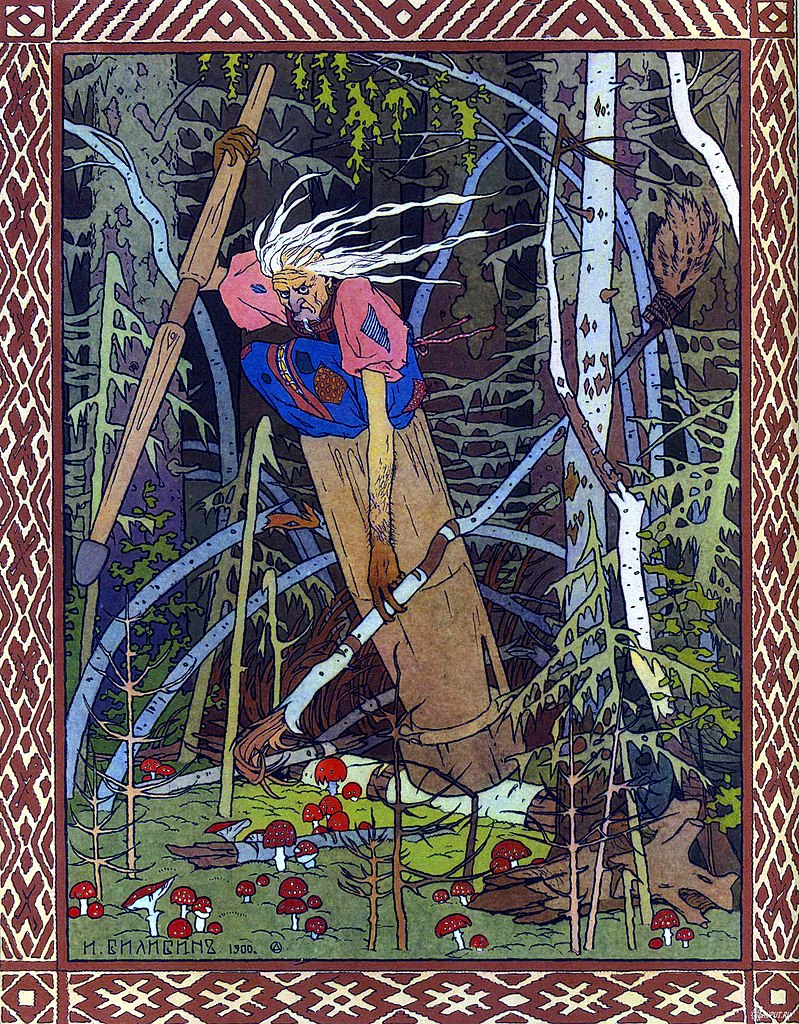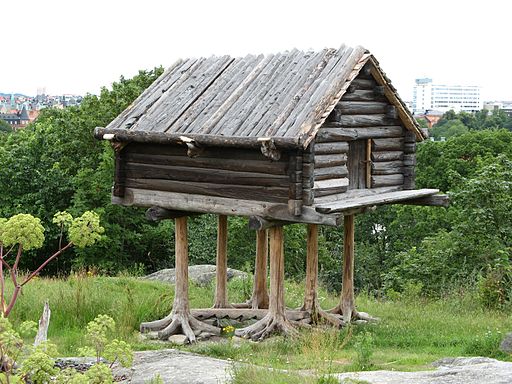Baba Yaga “is the mistress of the forest and the forest animals…, owing something to the old underworld goddesses.” –Jack Haney (1999, 98).
“Her dwelling on the border of the dark forest—a revolving hut mounted on chicken legs…—testifies to her primal identity as all-embracing Nature or Mother Earth.” –Helena Goscilo (in Balina et al. 2005, 13)
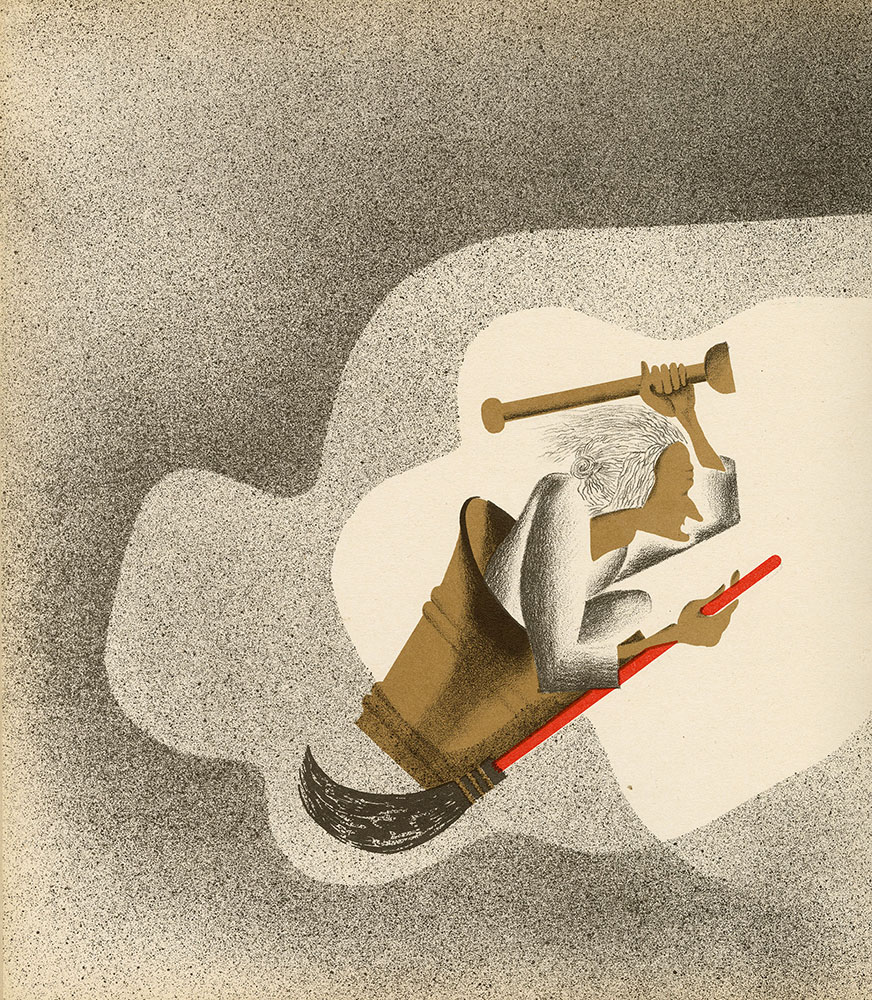
One of the most striking and unique figures of Russian folklore is the enigmatic witch, Baba Yaga, who appears in numerous folktales. Although some of her traits are similar to other folk figures in both Western and Eastern traditions, overall she is unique, especially in her ambiguity. Neither purely good nor purely evil, she is impossible to pin down, both “donor” and “villain,” often harming but sometimes helping the hero or heroine (as defined by Vladimir Propp, the pioneering Russian folklorist, cited in Johns 2004, 3). There are hundreds of different tales involving Baba Yaga in existence.
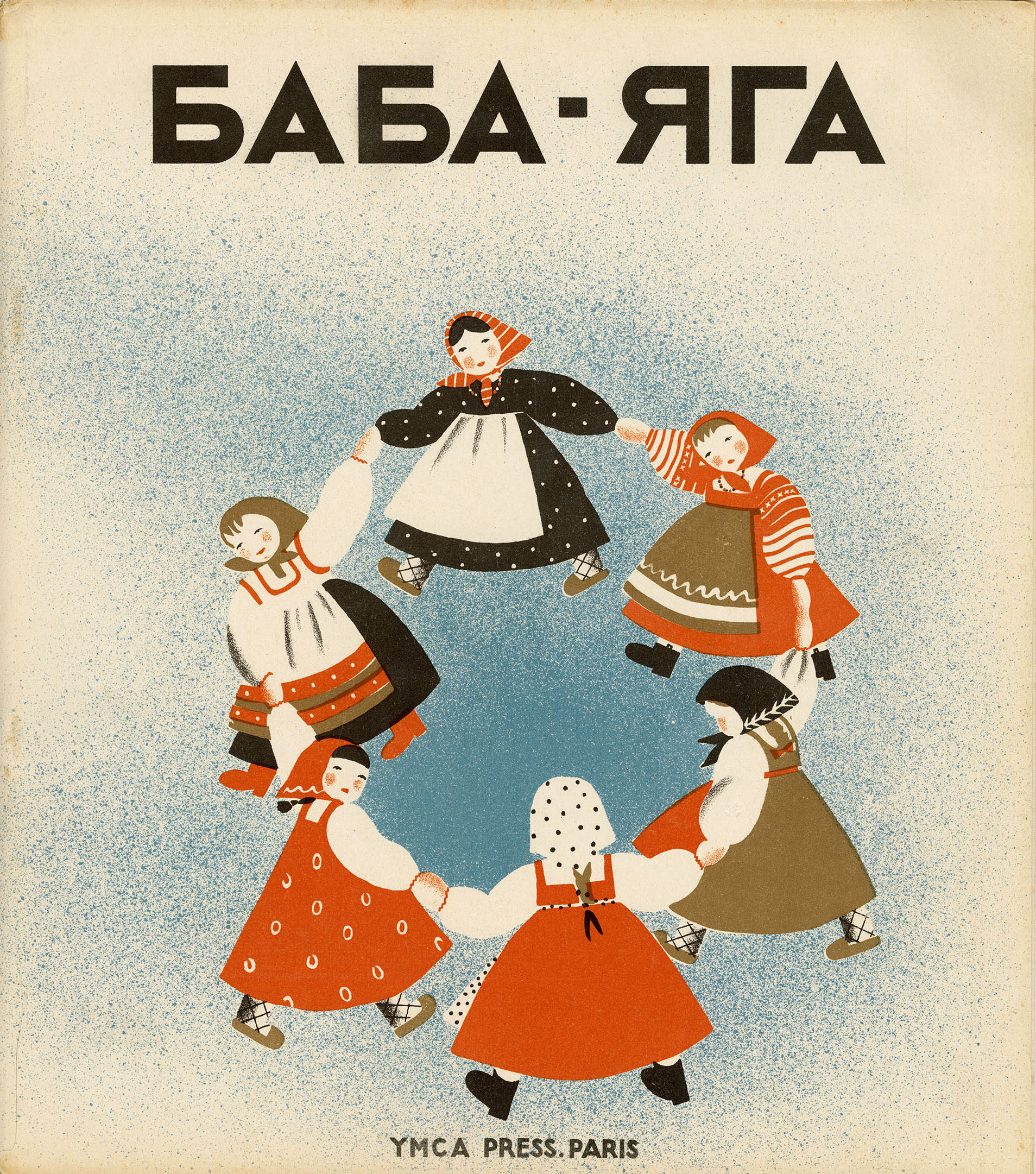
The Harer collection contains a few examples of Baba Yaga, including a full-length adaptation of a classic Baba Yaga tale illustrated by Natalie Parain in 1932 (available in Russian, French, and English versions), and a page devoted to Baba Yaga in Alphabet in Pictures (1904), by Alexandre Benois. There is also a pictorial reference to her in Bilibin’s illustrated version of Pushkin’s Tsar Saltan (1905), although she does not appear in that particular story.
Back to Top of Page
Bilibin’s illustrated version of Vasilisa the Beautiful helped establish the visual image of Baba Yaga for subsequent generations (Zipes in Forrester et al. 2008, ix).
Back to Top of Page
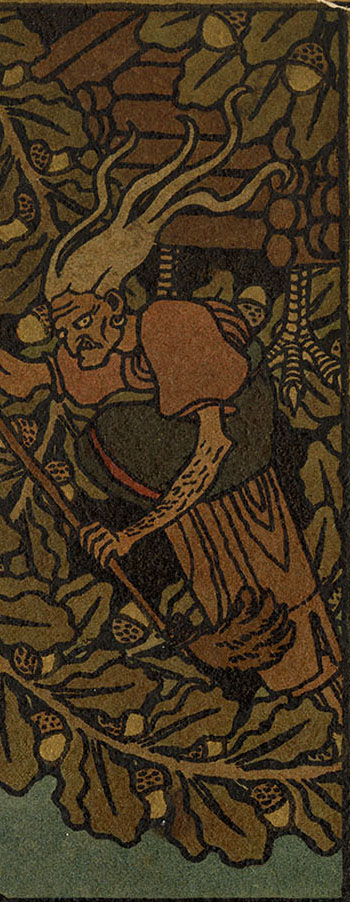
Baba Yaga is often called by a rhyming epithet: “Baba Yaga Bony Leg” (Баба-яга костяная нога). Scholars interpret her name in multiple ways: while “Baba” generally refers to a woman, especially a married peasant woman or an older woman, “Yaga” has been linked to words in other languages denoting illness, death, pain, worry, a female demon, or even a snake (Forrester et al, xxii; Johns 2004, 2, 8-11, 17).
“Students of Slavic mythology have traced the ultimate origins of Baba Yaga to an ancient Indo-European goddess of death” (Haney 1999, 98).
Back to Top of Page
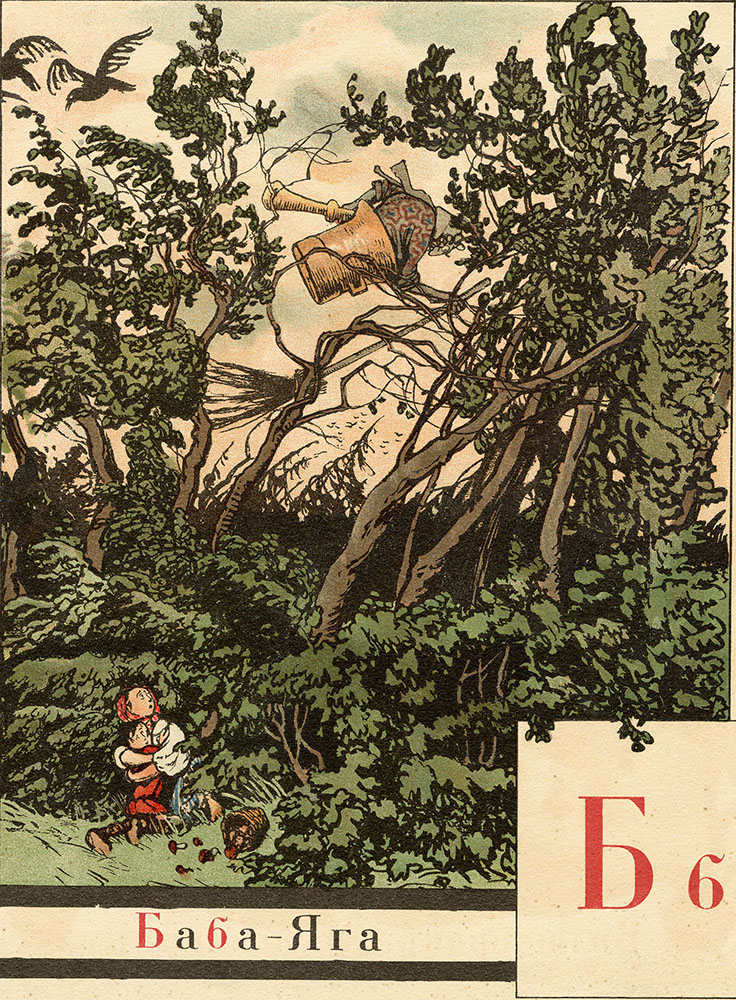
Baba Yaga’s most typical characteristics are her wooden house with chicken legs (избушка на курьих ножках), and her oversized mortar (ступа) and pestle (пест), which she uses to fly through the air. Scholars have interpreted her variously as a pagan goddess of the underworld, a “lunar witch” or a personified “storm cloud.” Her spinning hut can be likened to thunder and lightning or to the phases of the moon, and her house in the forest is sometimes viewed as a gateway to the land of the dead (Johns 2004, 16–22).
Baba Yaga “encompasses the paradoxes of nature: life and death, destruction and renewal, the feminine and the masculine—the last opposition symbolized in the mortar and pestle that transport her through space and time” (Helena Goscilo in Balina et al. 2005, 13).
Back to Top of Page
Baba Yaga’s house, while traditionally translated as a “hut” in English, in fact would be better understood as a wooden house in the forest. While “hut” has negative connotations in English, a Russian “izba” is sometimes quite elaborately decorated. “What does it tell us that Baba Yaga’s house is an izba? It is a folk house built in vernacular architecture, a traditional peasant house…, made of wood, and most often situated near a forest” (Forrester et al. 2008, xxvii– xxviii).
In order to find Baba Yaga, visitors to her hut must make her house turn around with the usual phrase: “Little house, little house! Stand with your back to the forest, your front to me” (Избушка, избушка! Стань к лесу задом, а ко мне передом).” Inside her house, Baba Yaga usually lies stretched out on her stove (Johns 2004, 2).
Back to Top of Page
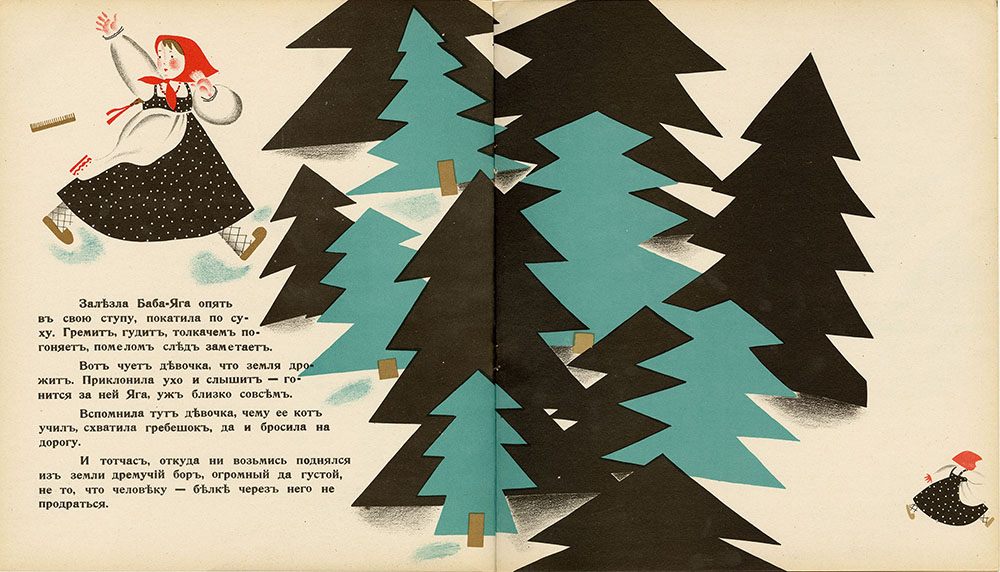
Many of the Baba Yaga stories are classic embodiments of what is often called the Russian “Wonder Tale.” Wonder tales usually involve a test of the hero/heroine, which results in his/her transformation (Haney 1999, 92–94).
Back to Top of Page
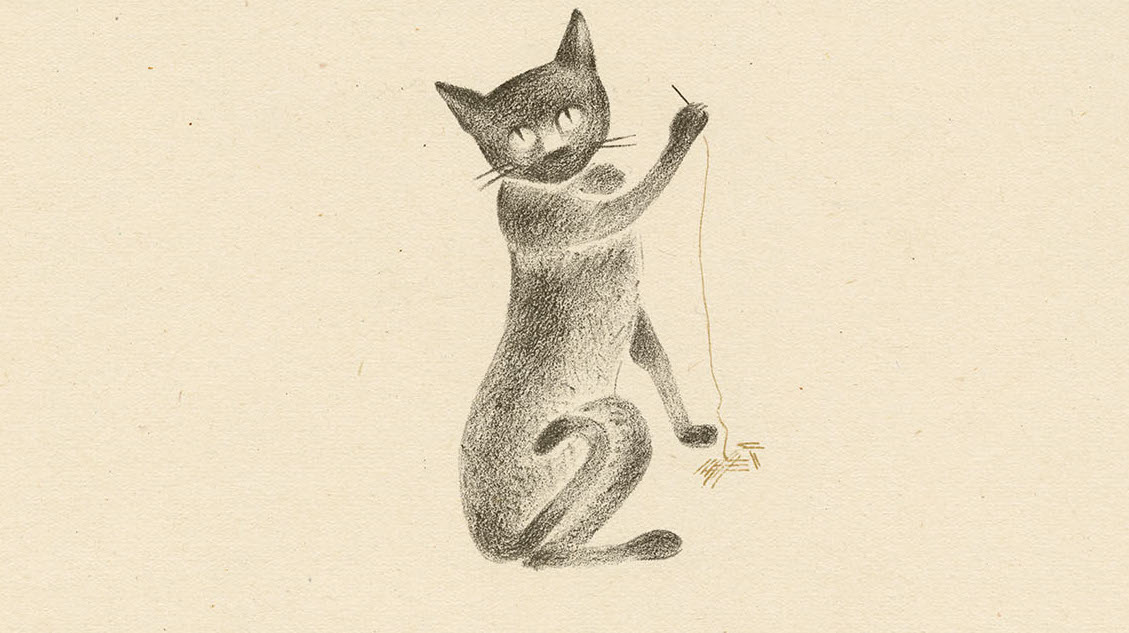
In the edition by Natalie Parain, the heroine must complete a series of tasks, and enlist the help of a friendly cat, in order to escape Baba Yaga.
Back to Top of Page
